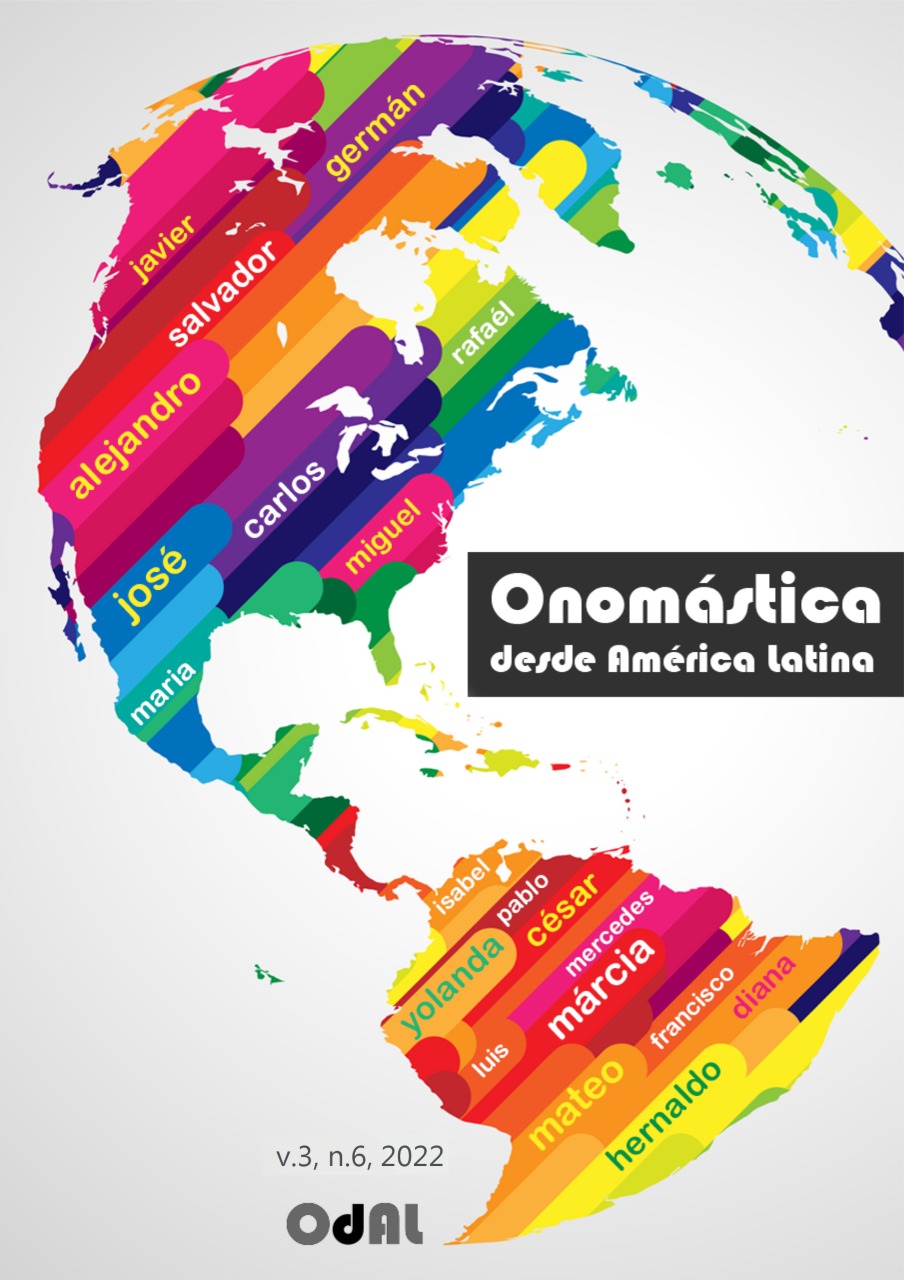Onomastics and textbooks:
matches and mismatches in Basic Education
DOI:
https://doi.org/10.48075/odal.v3i6.29177Keywords:
nomes próprios, substantivos próprios, livro didático, OnomásticaAbstract
This article aims to present how the notion of proper noun, present in grammars, is being presented in textbooks that are currently in circulation in public schools in the country, through the analysis of the chapters of the collections presented to these schools in the PNLD of Elementary Education of 2019, in which these concepts are addressed, to show how the notion of a proper name in Onomastics, as a more comprehensive approach, can generate invaluable wealth for students and teachers in the public network across the country when linked to a study with a focus on greater than requiring the student to simply categorize words.
References
AMARAL, E. T & SEIDE, M. S. (2020). Nomes próprios de pessoa: introdução à antroponímia brasileira. São Paulo, SP: Blucher.
AZEREDO, J. C. (2021). Gramática Houaiss da língua portuguesa. São Paulo, SP: Parábola editorial.
BALTHASAR, M & GOULART, S. (2018). Singular & Plural: leitura, produção e estudos de linguagem. São Paulo, SP: Moderna.
BARROS, João de. (1540). Grammatica da lingua portuguesa. [Versão digital] Recuperado de: http://purl.pt/12148.
BIDERMAN, M. T. C. (1998). Dimensões da palavra. Filologia e linguística portuguesa, 2, 81-118.
CARVALHINHOS, P. J. (2011). Aplicações da teoria dos signos na Onomástica. Língua e Literatura, 27, 299-309.
CASTILHO, A. T. (2010). Nova gramática do português brasileiro. São Paulo, SP: Contexto.
COSTA, C.L. & MARCHETTI, G. (2018). Geração Alpha: língua portuguesa. São Paulo, SP: edições SM.
FERRAREZI, C. Jr. (2008). Semântica para a educação básica. São Paulo, SP: Parábola editorial.
HENRIQUES, C. C. (2009). Nomenclatura gramatical brasileira: 50 anos depois. São Paulo, SP: Parábola editorial.
Ministério da Educação, Secretaria de Educação Básica. (1998) Parâmetros Curriculares Nacionais: língua portuguesa. Brasília, DF: Recuperado de: http://portal.mec.gov.br/seb/arquivos/pdf/portugues.pdf
Ministério da Educação. Secretaria de Educação Básica (2018). Base Nacional Comum Curricular. Brasília, DF: Recuperado de http://basenacionalcomum.mec.gov.br/.
NOGUEIRA, S. M; NOGUEIRA, J. E. Jr. (2006). Gramática e ensino de português no Maranhão do século XIX: Gramática elementar da língua portugueza, de Filippe Benicio de Oliveira Condurú. In: N. B. , BASTOS & D.V., PALMA. (Orgs.), História entrelaçada 2: a construção de gramáticas e o ensino de língua portuguesa na primeira metade do século XX. (1ª. ed., Cap. 1, p. 17). Rio de Janeiro, RJ: Lucerna.
OLIVEIRA, T.A.&ARAÚJO, L.A.M. (2018). Tecendo linguagens: língua portuguesa. Barueri, SP:Ibep.
ORMUNDO, W & SINISCALCHI,C. (2018). Se liga na língua: leitura, produção de texto e linguagem. São Paulo, SP: Moderna.
TEIXEIRA, L., SOUSA, S.M.,FARIA,K.&PATTRESI, N. (2018). Apoema: português. São Paulo, SP: editora do Brasil.
VASCONCELOS, J. L. (1931) Opúsculos: Onomatologia. Coimbra, Portugal: Imprensa da Universidade.
Downloads
Published
How to Cite
Issue
Section
License
Copyright (c) 2022 Robson Santos Silva

This work is licensed under a Creative Commons Attribution-NonCommercial-ShareAlike 4.0 International License.
Creative Commons Copyright Notice
Open Access Journals Policy
Authors who publish in this journal agree to the following terms:
1. Authors retain the copyright and grant the journal the right of first publication, with the work simultaneously licensed under the Creative Commons Attribution License that allows the sharing of the work with recognition of authorship and initial publication in this journal.
2. Mandatory authorities to assume commitments, for non-exclusive distribution of the version of the work published in this journal (eg, publish in an institutional repository or as a book chapter), with recognition of authorship and initial publication in this journal.
3. Authors are allowed and encouraged to publish and distribute their work online (eg in institutional repositories or on the personal page) at any point before or during the editorial process, as this can generate productive changes as well as increase impact and citation of the published work (See The Effect of Open Access).
Creative Commons License
This work is licensed under a Creative Commons Attribution-NonCommercial-ShareAlike 4.0 International License, which allows sharing, copying, distributing, displaying, reproducing, a whole or parts as long as it has no commercial purpose and is cited by authors and a source.

